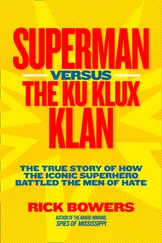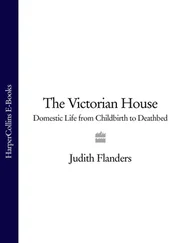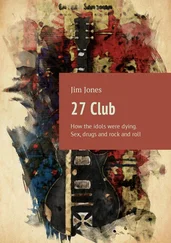Fergusson and his associates regularly paid Burke and Hare between £8 and £10 per corpse, and things went on smoothly until October 1828, when hubris was followed by nemesis. James Wilson, or ‘Daft Jamie’, was their next victim. Daft Jamie was a well-known Edinburgh street character who lived by begging and petty trading. He was about twenty years old at the time of his murder, physically large, but simple-minded and with a physical handicap, possibly club feet. It appears that Jamie refused the offers of alcohol, and thus, unlike all the other victims, was young, strong and sober, and able to fight back. Burke and Hare finally overpowered him, but it was impossible that his body showed no signs of violent death. It was even more impossible that no one would recognize his corpse. Some of the students did, but this simply hastened the dissection. Daft Jamie’s head and feet, which would have been familiar to many, were kept separate, again contrary to practice, as if Dr Knox and his assistants wanted to get rid of the recognizable bits first.
Even then, Burke and Hare continued unchecked. Their final victim was an elderly Irishwoman named Docherty. The Burkes had lodgers sharing their room, an ex-soldier named Gray and his wife. They were asked to move to Burke’s brother’s room for the night so the Burkes could entertain their ‘kinswoman’. The next morning, the Grays were told that she had become drunk and quarrelsome, so they had sent her on her way, Burke adding, ‘She’s quiet enough now.’ They also told Mrs Gray to stay away from a pile of straw in the corner. She had never been forbidden any area of their room before, so when the Burkes went out she investigated, and uncovered the corpse of an old woman. The couple, shocked, told Mrs Hare, who blandly offered them £10 to keep quiet. They left and notified the police.
By the time the police arrived, there was no body, but it was soon located in Dr Knox’s rooms, and the story unfolded. The Burkes and the Hares were all arrested, yet a successful prosecution was uncertain. The medical evidence for death by asphyxiation without violence on an old and frail woman like Mrs Docherty would be minimal, and apart from this one body, all the previous ‘sales’ had already been disposed of through the dissecting room. Hare was therefore chosen to turn king’s evidence, particularly as, if he had been charged, Margaret Hare would not have been able to testify against her husband. *It was Hare’s evidence that enabled indictments to be laid against Burke and his wife, Helen McDougal, on 8 December, for the murders of Mrs Docherty, Mary Paterson and Daft Jamie, and it was these three murders that formed the basis of the prosecution’s case.
Huge crowds surrounded the court for the trial, with three hundred special constables drafted in to hold people back, and the cavalry and infantry on standby. The trial lasted two days – 24 and 25 December – and it took the jury only fifty minutes to find Burke guilty, and the case against McDougal ‘not proven’. †Burke was sentenced to be hanged, dissected and anatomized. Helen McDougal was officially released, but was kept in custody to protect her from the mob, who felt that she too should be ‘burked’. The Hares were kept in prison while the courts heard a suit by Daft Jamie’s mother to bring a private prosecution for his death; when that failed, another civil action, for ‘assythment’, or compensation, kept them imprisoned until after Burke’s execution.
All three ultimately skulked out of town, trying to escape their notoriety. Hare was recognized in Dumfries, and a crowd estimated at 8,000 gathered, hoping to lynch him. It took a hundred special constables to rescue him, and he was kept in prison overnight for his own protection before being set on the road to Carlisle. McDougal, according to one broadside, was recognized as she was attempting to get passage to Ireland, and at a cry of ‘Hare’s wife! Burke her!’ a mob gathered. Legends of the afterlife of all three abounded, particularly for Hare – he was said to have been tossed in a lime kiln and blinded, or to have ended as a beggar on London’s Oxford Street – but nothing more is known of any of them.
Public interest in the case was all-consuming. In 1815, in his novel Guy Mannering, Walter Scott had briefly mentioned the earlier case of Helen Torrence and Jean Waldie, ‘resurrection women’, as he styled them. They had promised to procure a child’s body for a surgeon and, no child having conveniently died, they murdered one. Now Scott, sorry to be away during Burke’s trial, was amused to receive that same month ‘a very polite card from the Medical Society inviting me to dine with them. It sounded like a card from Mr Thurtell inviting one to a share of his gig.’ At the same time an enterprising citizen had rented Hare’s cellar, and was showing it ‘for a trifle’ to visitors who queued twenty deep to have a look, and Scott was a wry observer of the ‘well dress’d females’ who visited it: ‘I did not go. although the newspapers reported me one of the visitors.’ *
Everything to do with the case was enthusiastically retailed in the newspapers. The Aberdeen Journal gave four of its five columns to the trial transcript, plus an editorial, and then ended with the rather naked hope that a local woman, one ‘Abigail Simpson, a miserable old woman, a pauper’, who had vanished some time before, might also have been one of the victims. The Courant’s circulation increased by 8,000 copies on the day it reported the trial. Nothing was too minor to be repeated, and, in default of other news, repeated several times. Many newspapers, rather than sending their own journalists, simply copied other papers’ reports, creating an echo chamber of innuendo and rumour. This applied to the London dailies as well as the smaller provincial weeklies or bi-weeklies. The Times had no non-Scottish-sourced article on Burke and Hare until after Burke’s conviction, and even then it was only an editorial. That same day, an article on Burke’s confession stressed that ‘The information from which the following article is drawn up we have received from a most respectable quarter’ – but that ‘we’ is somewhat fudged, as the entire article, ‘we’ included, is an unacknowledged reprint from the Caledonian Mercury.
The crowd at Burke’s execution – perhaps 20,000 people – cheered as the scaffold was built. For most executions, the labourers who constructed the scaffold drew lots to decide which of them would perform the hateful task. This time there were volunteers. Not for this crowd the respect frequently given to a gallant outlaw, or the pity for a pathetic victim only too closely resembling themselves. When Burke appeared, the crowd screamed its hatred: ‘The murderer! burke him! choke him!’ A journalist reported one spectator ‘hallooing and encouraging the mob to persevere in these manifestations of their feelings’, raising a roar each time the dying Burke was convulsed, conducting the crowd’s response until the body was cut down. The Times, normally quick to condemn not only the behaviour of the crowds at an execution, but their very presence, praised these outbursts as ‘ebullitions of virtuous and honest resentment. we honour them for it’.
As Burke’s body was removed from the scaffold, souvenir-hunters descended, grabbing at shavings from the coffin, or pieces of the rope.As usual, these relic-gatherers were condemned by the middle-class press. Yet middle-class scavengers were every bit as avid: a wallet made from Burke’s scalp is in the History of Surgery Museum in Edinburgh’s Royal College of Surgeons. Meanwhile Burke’s corpse took the same trip to an anatomy theatre as had many of those he had accompanied. This time, though, it was to the rooms of Professor Monro, a competitor of Knox, who was keeping a very low profile. First the grandees got a private viewing – the surgeon Robert Liston; the phrenologist George Combe; his follower, the sculptor Samuel Joseph, who took a cast of Burke’s head; and Sir William Hamilton, the philosopher, and Combe’s enemy, as a debunker of phrenology. Then Monro performed a public dissection, initially delayed by a riot staged by the vast number of students refused entry. The police restored order only when they promised that all would get a turn, fifty at a time. The next day, there was a display of the now-anatomized corpse for non-medical visitors. Visitors filed past Burke’s body between ten in the morning and dusk – perhaps as many as 30,000 came through the anatomy theatre. One man recorded in his diary: ‘Burke’s body was lying stretched out on a table in a large sort of lumber or dissecting room, quite naked. The upper part of the skull had been sawn off and the brain extracted, but in other respects he was untouched, except, indeed, that the hair had been all shaven off his body.’
Читать дальше












